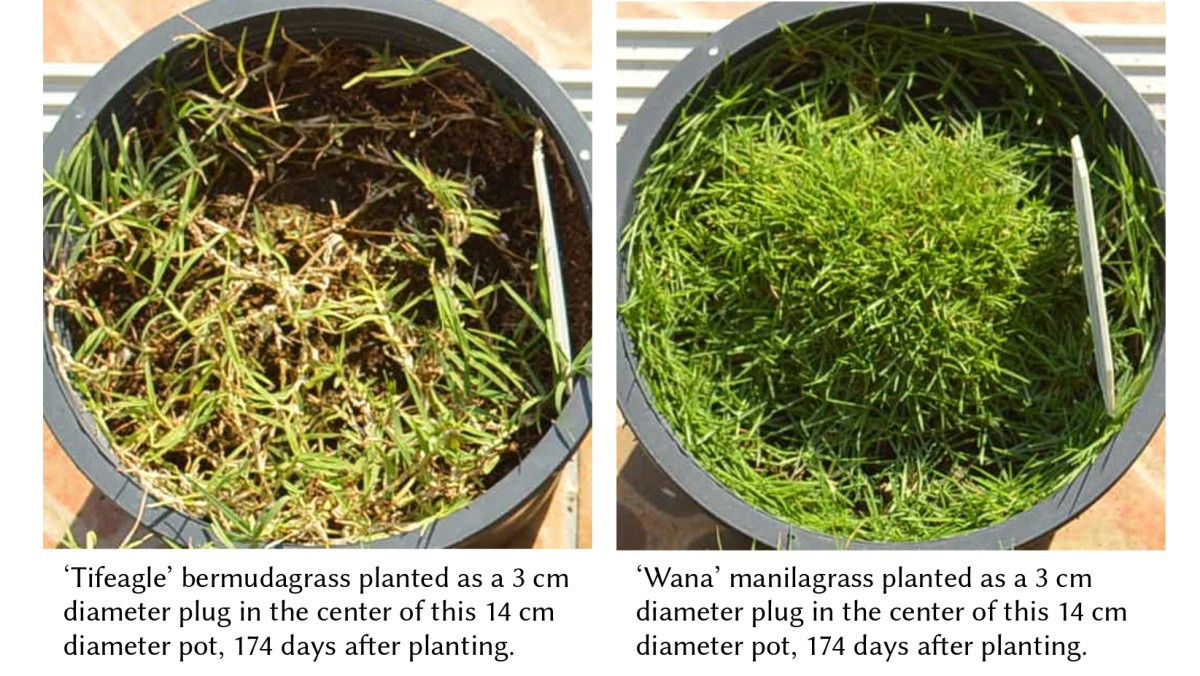This photo was taken 174 days after the ‘Tifeagle’ bermudagrass and ‘Wana’ manilagrass were planted as 3 cm diameter plugs on 1 October 2019.

These particular pots have been fertilized with nitrogen only since then, with no P or K. So one might expect that the bermudagrass wouldn’t look so good, and that the manilagrass might look a little better.
As I’ve watched these grasses grow for almost half a year, however, I’ve been struck by something else. The bermudagrass leaves senesce—age and die—rapidly and repeatedly. The manilagrass leaves, however, seem to last forever. Even those leaves that were produced soon after the plugs were planted in these pots, the leaves that would be about 140 days old now, don’t appear to have died.
“Leaves generally only live 30 to 60 days,” I read, in Fundamentals of Turfgrass Management by Christians, Patton, and Law. It has been interesting to observe just how long the manilagrass leaves have lived.
In this experiment, I’ve not trimmed these grasses. Normally I would cut with scissors, but these I’ve let grow with no mowing. The pots are in morning shade from a building, and in afternoon sun. Say 50% shade—that’s another reason the manilagrass looks so much better than the Tifeagle. The pots are irrigated to prevent wilt. The temperatures have been optimal for warm-season growth since October. This is at 7° N, with an elevation close to sea level. Other than the shade, and the lack of P and K, other factors have been suitable for optimum growth.
Plants using the stress tolerating strategy of Grime will often have long-lived leaves. That appears to be the case with greens-type manilagrass.
More about this at:
-
The C-S-R plant strategies of Grime—competitive, stress tolerant, and ruderal.
-
Fertilizer response at planting for more about this experiment and photos from October 2019.
-
Experiment update: fertilizer response at planting with more photos of this in November 2019.